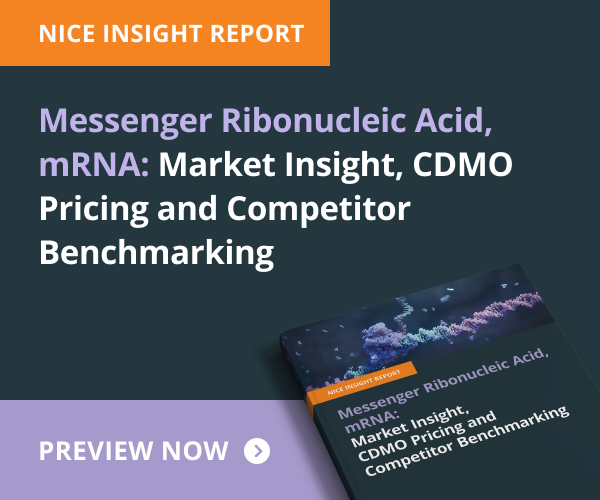Plasmid DNA was key to the development of biologic drug manufacturing. Today, it plays a critical role in the production of next-generation cell and gene therapies and vaccines. With its plasmid DNA manufacturing expertise, Aldevron has helped facilitate the advance of these important therapeutics. The company continues to invest in additional capacity and novel capabilities to support biopharma manufacturers into the future.
Why Plasmids?
Plasmids are small extrachromosomal double-stranded DNA units that are typically circular in shape and are found across bacterial species. They behave independently of chromosomal DNA and are capable of self-replication. Generally, plasmids contain a few genes that encode proteins for cellular activities that are necessary for bacterial survival. Many are involved in establishing resistance to antibiotics, digesting foreign substances and killing other bacteria. Most notably, they can be picked up from the environment and transferred between bacteria via horizontal gene transfer (HGT), providing a unique nonsexual mechanism for the transfer of genetic information between individual bacteria and across species boundaries.
From Awareness to Understanding
While scientists were aware of the existence of independent strands of DNA in bacterial cells as early as the 1940s, the significance and function was not well understood. The term plasmid was coined in 1952 by Joshua Lederberg, who used it to refer to “any extrachromosomal hereditary element” when he observed virus particles picking up bacterial genes and transferring them to another host by a process he called transduction.
Once the double-helical structure of DNA was discovered and it was understood that DNA is the carrier of genetic information, the nature of plasmids as strands of DNA that can pass on traits became clear. Several plasmids were identified in the 1960s, including fertility and resistance (R) plasmids.
Easy to Manipulate
Plasmid DNA was first isolated in 1967, and researchers across disciplines have been manipulating it ever since. Plasmids are attractive as genetic engineering tools because they are stable and easy to genetically modify. They have 1,000–30,000 DNA base pairs, so they are relatively easy to handle. They do not degrade when cut and can return to their original shape, making it easy to insert new DNA sequences into existing plasmid backbones. And because they self-replicate in bacterial cells, growing large quantities of bacteria is an effective strategy to produce large amounts of DNA.
Production of Therapeutic Proteins
The first pharmaceutical application of plasmids was achieved in the 1970s. Foreign recombinant DNA was introduced into bacteria, enabling them to produce therapeutic proteins. Production of human insulin via transgene-containing plasmids in Escherichia coli was first accomplished in 1978. By 1980, advances in expression vector and transfection techniques led to the use of plasmids for the expression of foreign genes in mammalian cells, enabling the manufacture of more complex proteins and other biomolecules.
Generation of Transgenic Animals and Plants
In 1981, plasmid DNA was used to generate the first transgenic animal. Mice expressing thymidine kinase from herpes simplex virus were created by injecting recombinant plasmid DNA into fertilized mouse embryos. Transgenic plants followed in 1983 — first to improve the properties of crops, but then as a means for enabling plant-based drug production.
Manufacture of Vaccines and Gene Therapies
By 1991, researchers were exploring the use of plasmid DNA for gene therapies. Compared with recombinant viruses, plasmids are attractive because they can deliver large quantities of DNA while presenting a low risk for oncogenesis and immunogenicity. They are also easier to manufacture in large quantities and tend to be fairly stable. Unfortunately, they are inefficient gene transfer vectors when used in vivo. Today, most gene therapies are delivered in the form of viral vectors, which are manufactured using several different plasmids.
Also in the early 1990s, scientists were learning about the ability of plasmid DNA to stimulate both humoral immunity (antibodies) and cell-mediated immunity (T cells) and thus the potential for plasmids to be used as vaccines. In this case, the plasmids are designed to produce specific proteins from the relevant pathogen and then purified. As with gene therapies, using plasmids avoids the need to work with or introduce infectious agents into the body, and they are stable and can be readily manufactured at large scale. However, they tend to induce weaker immune responses. DNA vaccines are under development for a number of different diseases, from infectious diseases, such as HIV-AIDS, Ebola, malaria and influenza, to various cancers and neurological diseases.
We can provide plasmid DNA for discovery research, clinical and commercial applications.
Gene Editing and Plasmid DNA
Integration of plasmid DNA into the genome allowed for further manipulation. Today, gene knock-outs, knock-ins, overexpression, disease models, conditional mutants and fluorescently labeled proteins are all facilitated by the use of plasmid DNA.
In 2002, plasmid DNA was engineered to synthesize small RNAs, enabling the suppression of gene expression in mammalian cells via RNA-mediated interference (RNAi). Gene editing within rodent cells was achieved in 2011 by coinjecting single-cell embryos with sequence-specific zinc-finger nucleases and relevant plasmid DNA. Mammalian cells transfected with plasmid DNA expressing Cas9 and guide RNA were produced in 2013, enabling the gene editing system CRISPR/Cas to rapidly and precisely edit genomes inside living cells.
Advancing Plasmid Manufacturing at Aldevron
Aldevron has been producing plasmid DNA since its inception in 1998. We began offering research-grade material only, and then expanded into custom manufacturing of plasmid DNA for preclinical, clinical and commercial applications.
We have proven experience producing plasmid DNA needed for viral vectors (AAV, lentivirus), DNA vaccines, CAR-T cell therapy, gene editing, cloning, DNA vaccines, personalized cell therapies and other applications. Companies pursuing truly novel products, such as Sarepta with its gene therapy treatment for Duchenne muscular dystrophy and Genprex with its plasmid DNA treatment for lung cancer, turn to Aldevron as their plasmid DNA supplier.
We can produce supercoiled, linearized, minicircle, nanoplasmid and bacmid plasmid DNA and have the capacity for thousands of small-scale plasmid preps per day and large-scale capacity for manufacturing hundreds of grams per lot. We can provide plasmid DNA for discovery research, clinical, and commercial applications.
Aldevron produces plasmids at different service levels to meet varying customer requirements. Research grade is the quickest option for high-quality plasmid DNA. GMP-Source™ is a cost-effective alternative to cGMP. Our cGMP service provides the highest quality oversight and process control and can support any application, including parenteral administration.
Recently, Aldevron also began offering bulk, off-the-shelf plasmids for the production of AAV and lentiviral vectors.1 The immediate availability of these plasmids significantly reduces the timeline and cost for production of AAV and LV vectors while also facilitating risk reduction through the reliable supply of consistent, high-quality product. The inventory plasmids are also offered in research grade, GMP-Source™ and cGMP service levels.
Gene knock-outs, knock-ins, overexpression, disease models, conditional mutants and fluorescently labeled proteins are all facilitated by the use of plasmid DNA.
Preparing for More Growth
Today, R&D and manufacturing take place at three locations in North Dakota, Wisconsin and Germany. All of our clinical and commercial production operations use disposable manufacturing equipment for reduced cycle times (no cleaning or cleaning validation) and reduced risk of carryover. We have been at the forefront of plasmid manufacturing technology, developing solutions that allow scaling of fermentation and purification processes from 10 L to 1,000 L.
In September 2018, Aldevron opened a new 70,000-ft2 manufacturing facility in Fargo, ND, the largest worldwide for plasmid DNA production, to ramp up capacity and to add capabilities for cGMP recombinant proteins, including CRISPR nucleases, and enzymatically synthesized mRNA. In August 2019, we broke ground on a 14-acre campus expansion at the same site that will include the addition of a second GMP manufacturing facility that more than quadruples the current capacity, with an Administration and Client Experience Center and a Research and Development and Training Center.
Earlier in 2019, we added approximately 4,300 ft2 of laboratory and production space to our Freiberg facility, expanding our capacity and adding a new Beacon Optofluidic platform to support rapid execution of species-agnostic single B cell antibody discovery. In April 2019, we added 1,000-L fermentation capacity to the Wisconsin plant, which will be online by the end of 2019, and plan to further expand the footprint of that site.
In July 2019, we were excited to partner with EQT, a leading private equity firm based in Europe. EQT is supporting Aldevron through investments in additional production capacity, R&D and growth initiatives and by leveraging its strong healthcare expertise, global presence and network of industrial advisors. EQT now owns a majority interest, with our founders, management and TA Associates retaining a minority stake.
What Lies Ahead for Plasmids?
Many of the therapies that rely on plasmid DNA are advancing rapidly through clinical development and will soon be commercialized. Newer technologies enabling non-viral delivery of gene therapies and vaccines, as well as personalized cell therapies, will further expand demand for plasmid DNA. In addition to scaling up to larger quantities, Aldevron is scaling out and investing in technologies to support personalized medicine, which requires a unique plasmid DNA product for each patient. As a result of these developments, plasmid manufacturing capacity will need to increase exponentially.
No one company will be able to support the entire market; multiple organizations are needed to supply the rapid growing field. In addition, breakthrough innovations in manufacturing technology will be necessary. Production processes and equipment — all originally developed for the manufacture of antibodies and proteins, which are much smaller than plasmids — need to be reengineered specifically for plasmid manufacturing to increase efficiency, productivity and scalability.
Aldevron intends to remain at the forefront, contributing to the development of novel systems and technologies designed specifically for plasmid DNA manufacturing.
Reference
-
Brown, James. “Supporting AAV and Lentiviral Vector Development and Commercialization.” Pharma’s Almanac. 24 May 2019.



